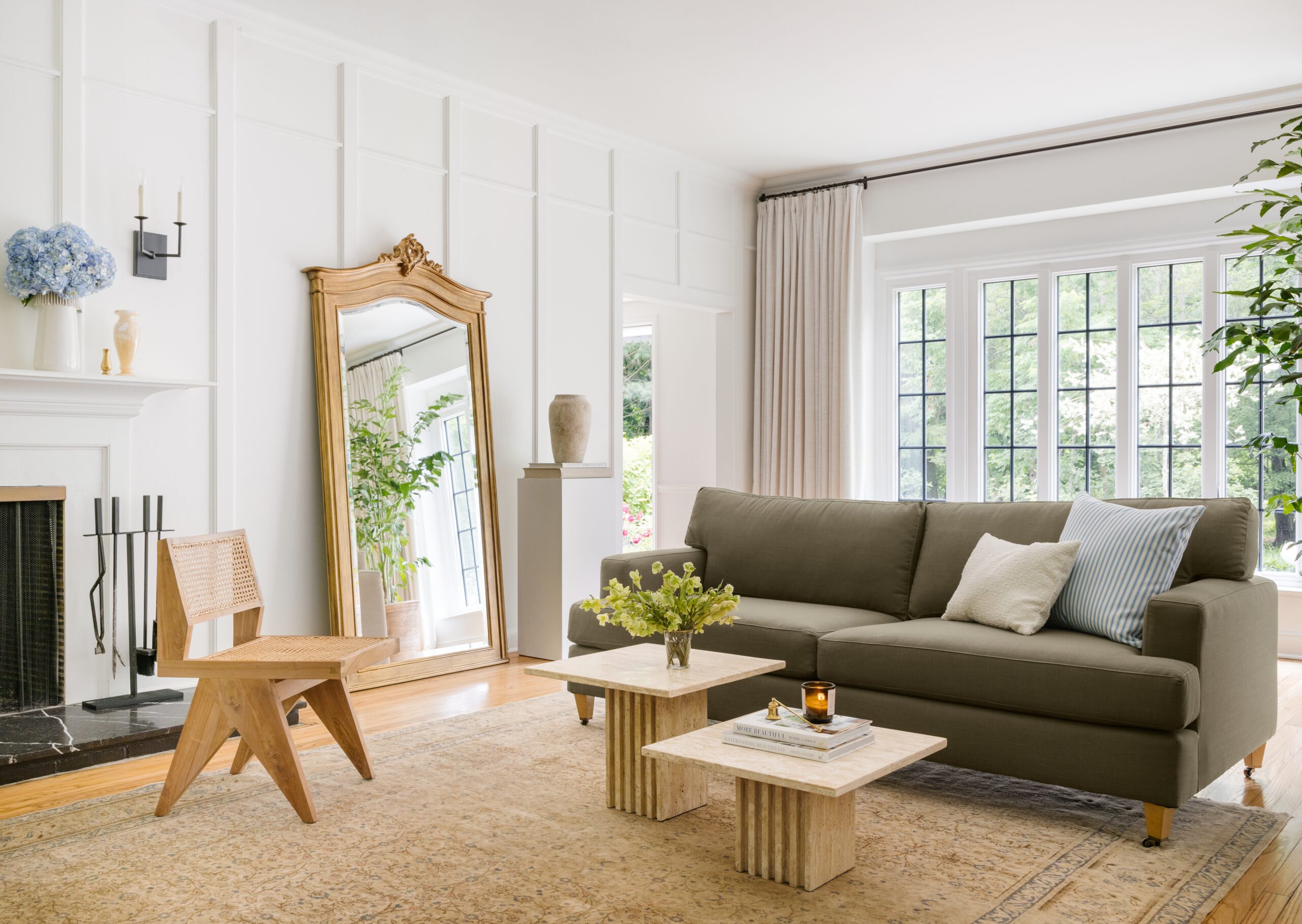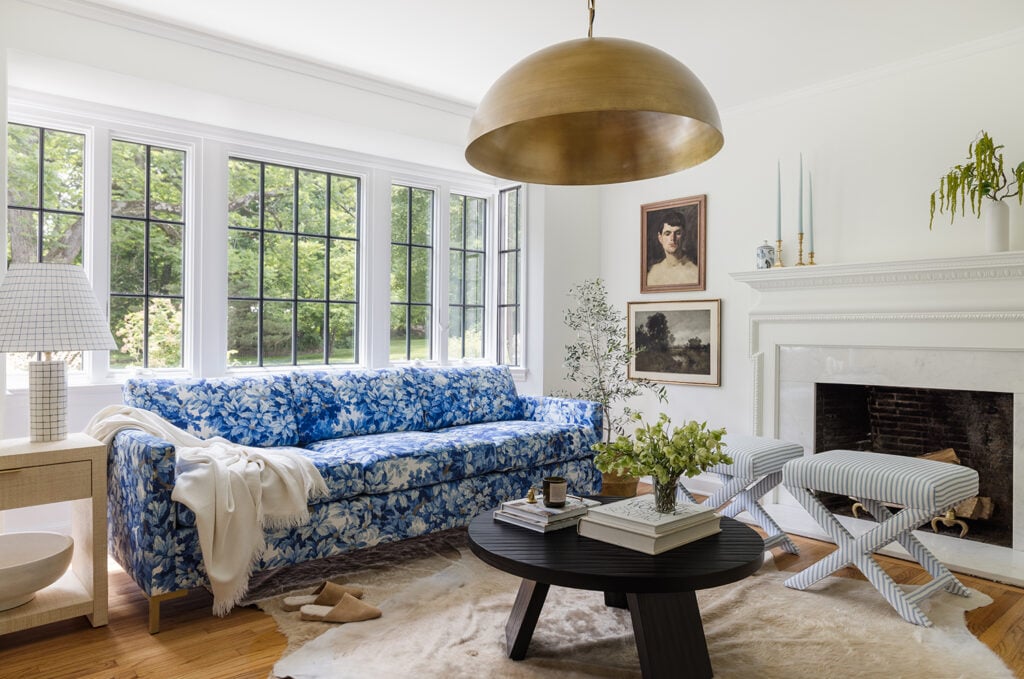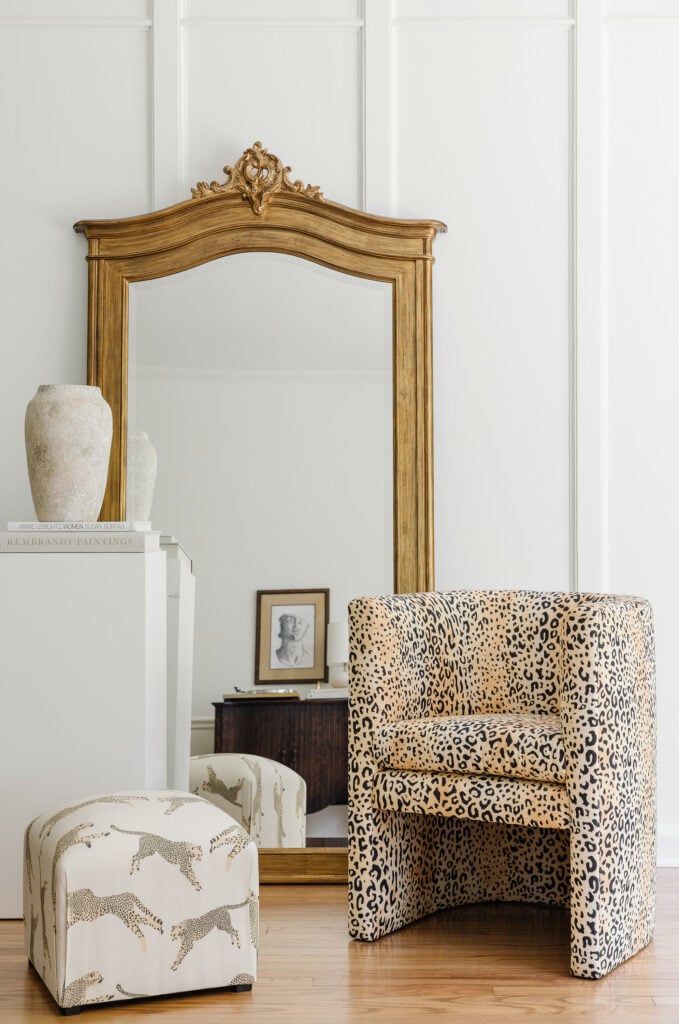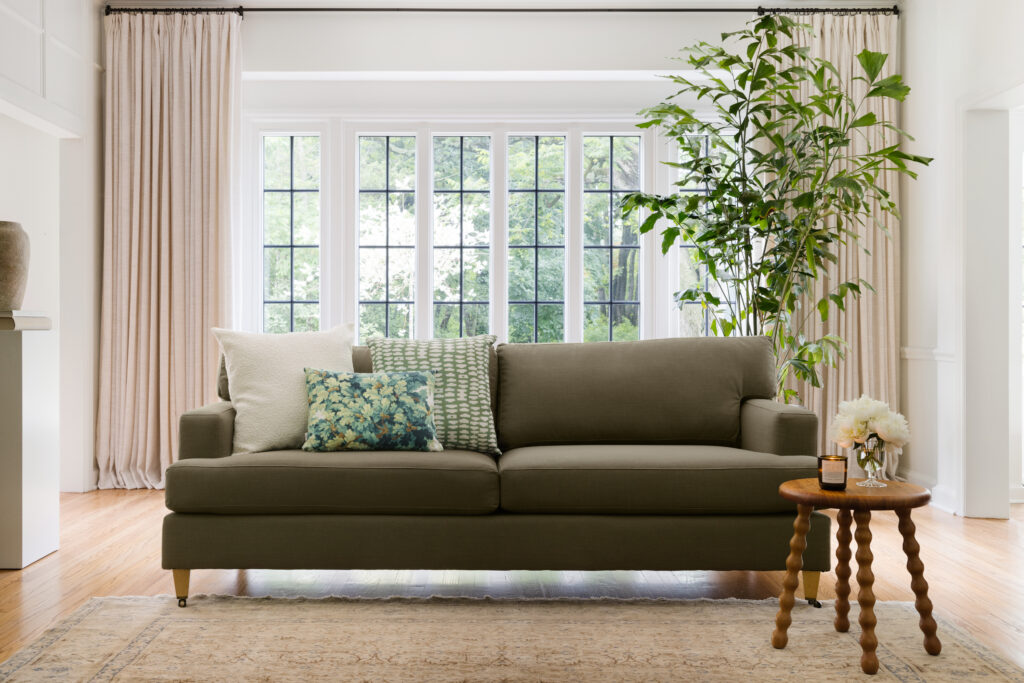From so-called “Grandmillennial” design to the relaxed traditionalist style trend, it’s clear that traditional furniture styles are making an inevitable comeback. But as the name implies, traditional furniture and traditional style at large has never been concerned with trends — the look is firmly rooted in classic pieces that stand the test of time. While the traditional furniture styles of the 21st Century merely borrow elements from antique traditional furniture, the signature craftsmanship, warmth, and attention to detail still define the style to this day. Ahead, read up on how to identify traditional furniture styles, and what classic furniture and decor looks like in 2022 (and beyond).
What Is Traditional Furniture?
With roots in 17th-century Europe, authentic traditional furniture is every bit as ornate, intricate, and grandiose as the ruling monarchies of the time. From living room sofas and accent chairs to dining room tables, dining chairs, beds, and desks, traditional furniture was specifically designed to express wealth and status (down to every last hand-carved finial and bullion fringe edge). Starting with the Jacobean era from roughly 1550 to 1650, traditional furniture traverses the colonial, rococo, revival, victorian, and art nouveau eras before evolving into 19th century modern design styles like bauhaus, art deco, and mid-century modern. Popular traditional furniture styles include Queen Anne, Pennsylvania Dutch, Louis XVI, and Chippendale, all of which combine functionality with grandiose ornamentation.
Common Characteristics of Traditional Furniture
While the history of traditional furniture spans centuries, authentic pieces share a few key characteristics and aesthetic similarities. From materials, embellishments, and upholstery to color palette, pattern, ornamentation, and accents, here’s what to look for in traditional furniture styles:
Dark Wood Tones
Traditional furniture from the 17th, 18th, and 19th centuries was often hand-carved from dark woods like walnut, oak, and rosewood. Today, traditional pieces still carry on that rich, storied tradition, boasting gorgeous wood frames, legs, tabletops, and details.
Rich Color Palette
As to be expected, traditional upholstered furniture often features rich, saturated hues like deep burgundy, golden yellow, classic blue, and emerald green. Contemporary furniture pieces often boast a more varied color scheme ranging from muted sage green to crisp ivory.
Ornate Woodwork
From interior design to individual pieces of furniture, intricate woodwork and ornate embellishments were the ultimate sign of wealth. Naturally, traditional furniture pieces boast clean lines paired with ornate details like scrolled arms, claw feet, barrel turned legs, and turned finials.
Luxe Fabrics
Plush materials like velvet and silk were also a show of status, so everything from sofas, accent chairs, and dining chairs to drapes and table cloths were fashioned in these luxe fabrics. Today, velvet still remains a popular choice for classic furniture upholstery, in addition to leather and linen.
Intricate Upholstery
Speaking of upholstery, classic furniture pieces are all about intricate, over-the-top cushioning in luxe fabrics and grandiose patterns. Chairs and sofas often featured decorative fringe, rope, and braided trim.
Gold Accents
From expensive, gold-flecked fabrics to brass hardware on dressers, side tables, and armoires, rich gold accents feature prominently on traditional furniture pieces. While silver, bronze, gunmetal, and nickel are also on the menu now, the same can be said of traditional furniture today.
Curved Silhouettes
While the term “curved furniture” likely recalls the 1980s iteration today, traditional furniture pieces pioneered the look. From intricately shaped sofa backs to sloped arms and soft edges, classic furniture created and refined various soft silhouettes across centuries.
Traditional Furniture In The Modern Design Age
It goes without saying that the laborious, hands-on approach to craftsmanship from the 17th to 19th centuries is no longer the status quo, even when purchasing expensive living room, bedroom, or dining room furniture. Today, traditional-style pieces merely borrow design elements from the various eras, and often soften them for a contemporary audience (like The Inside by Havenly’s Classic Sofa, for example).
The application of traditional furniture styles has also evolved. Rather than filling a home with ornate oak furniture (an incredibly expensive undertaking), interior designers now have the luxury of borrowing from different periods, styles, silhouettes, and beyond. Think: an antique 19th-century gold mirror paired with bouclé swivel chairs. In fact, we’d argue that mixing furniture styles is one of the most prominent interior design trends of the last decade. But no matter the year, decade, or interior design trend of the moment, traditional furniture styles will always have a place in tasteful homes.




